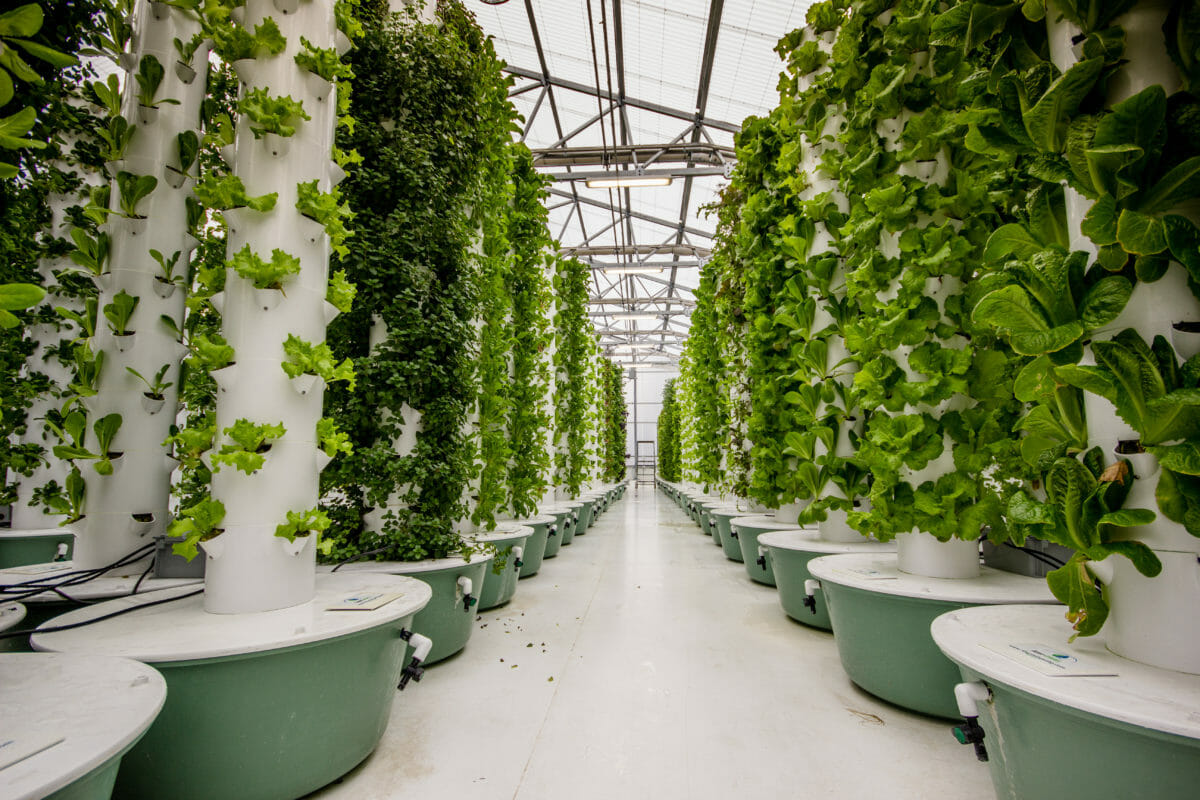Types of Soilless Farming
- Hydroponics
- Hydroponics comes from the Latin language and it means working water. “hydro” means “water” and “ponos” means “labor”.
- Refers to Cultivation of plants in a nutrient solution without soil.
- Hydroponics involves growing plants in a soil less medium, usually perlite, rock wool or gravel, using a small pump to circulate nutrient-laden water through the root system.
- Systems used:
- Static solution culture – Plants grown in containers filled with nutrient solution.
- Continuous flow culture – Nutrient solution flows past the roots (e.g., Nutrient Film Technique, NFT).
- Deep water culture – Roots suspended in aerated nutrient solution.
- Examples of crops: Lettuce, tomato, cucumber, spinach, strawberry.

- Aeroponics
- Plants are grown with roots suspended in air and sprayed with nutrient mist.
- Features:
- Provides maximum oxygen availability to roots.
- Saves up to 90 percent water compared to traditional farming.
- Requires high technical precision and cost.
- Examples of crops: Potato seed tubers, leafy greens, herbs, medicinal plants.

- Aquaponics
- Refers to the Integration of aquaculture (fish farming) and hydroponics in a closed-loop system.
- Process:
- Fish waste provides nutrients for plants.
- Plants filter and purify water, which is recirculated back to fish tanks.
- Advantages: Dual production (fish + vegetables), eco-friendly system.
- Examples of crops: Leafy greens, basil, lettuce; Fish – tilapia, catfish.

- Substrate Culture (Aggregate Culture)
- Definition: Plants grown in inert solid media instead of soil, with nutrient solution supplied through irrigation.
- Common substrates:
- Natural – Sand, gravel, pumice, coconut coir.
- Artificial – Rockwool, perlite, vermiculite, clay pellets.
- Advantages: Provides root support and aeration; easier management than hydroponics.
- Examples of crops: Capsicum, tomato, rose, carnation.

- Vertical Farming
- Definition: Growing plants in stacked layers using hydroponic, aeroponics, or aquaponics methods.
- Features:
- Maximizes space utilization, especially in urban areas.
- Controlled environment with LED lighting, automation, and sensors.
- High productivity but requires large initial investment.
- Examples of crops: Lettuce, microgreens, herbs, strawberries.

- Other Specialized Forms
- Fogponics – Similar to aeroponics, but roots are supplied with ultrasonic fog nutrient mist.
- Bioponics – Use of organic nutrient solutions derived from compost, vermi compost, or fish waste.
- Space farming systems – Experimental soilless methods developed by NASA for extraterrestrial crop production.